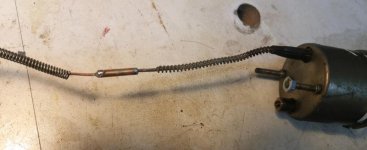dklawson
Yoda
Offline
The problem is, the working fluid is ether, the main ingredient in starting fluid, more flammable than gasoline. It's an unnecessary risk to use an open flame.Hairyone said:I would have no hesitation using a torch, as long as it's away from petrol.
Unfortunately that would involve baking the whole gauge head to a rather high heat. It is also unnecessary as the tube can be soft soldered following proper cleaning and using good flux.Hairyone said:Can you take the whole thing out & put it on an electric stove on low as some background heat?
Hairyone said:OR Is the capillary tube stainless steel?
The capillary tubes are copper. OEM tubes have something like a zinc or cadmium plating on them. Aftermarket donor gauges typically are bare copper.
You can indeed solder stainless steel but you cannot use resin flux NOR can you use resin core solder. You can prep the surface and have some success with regular acid flux. However, there are some additional tricks needed for consistent results. There are better fluxes made for stainless. Regardless, it doesn't apply here as the tubes are copper and plated copper.

 Hi Guest!
Hi Guest!

 smilie in place of the real @
smilie in place of the real @
 Pretty Please - add it to our Events forum(s) and add to the calendar! >>
Pretty Please - add it to our Events forum(s) and add to the calendar! >> 

